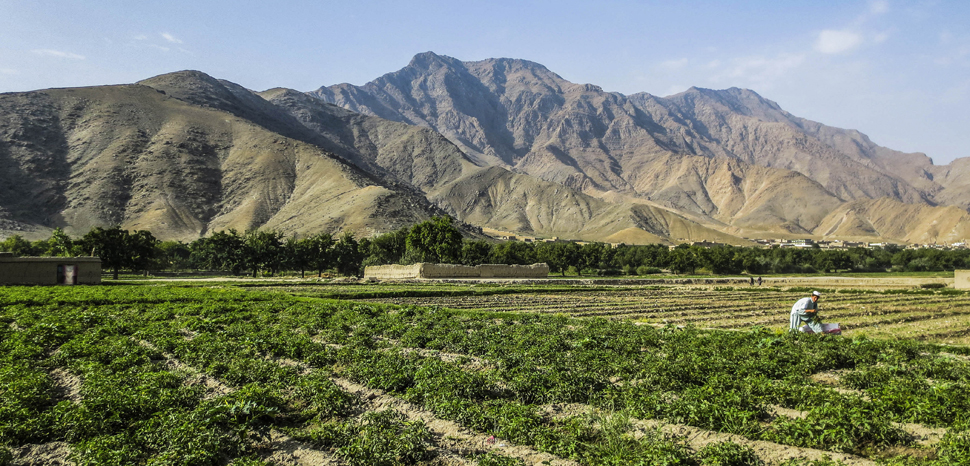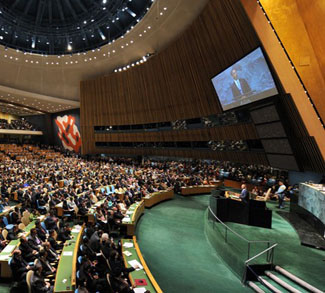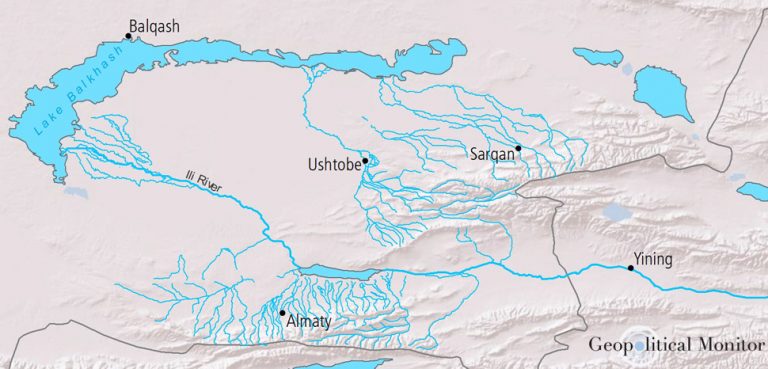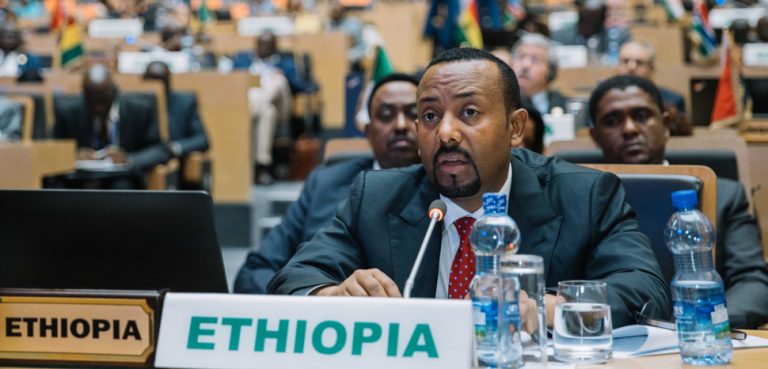Afghanistan, the kryptonite in India’s Central Asia Policy, has started to stroll back onto the path of development after decades of economic stagnancy, plagued by the perennial impediments of insecurity, insurgency, and corruption. The establishment of new infrastructural connectivity since 2014, allowing the country to reach new regional and international markets, is promising, not only for the stature of Afghanistan but also for regional development. Afghanistan, contrary to the popular perception that it represents an “Achilles Heel,” will be playing a seminal role in Indian policies toward Central Asia going forward.
The growing geopolitical and geostrategic stature of Central Asia has forced policymakers in Delhi, penitent of their previous apathy toward the region, to strive toward recalibrating India’s Central Asia policy in order to maximize national interests and establish a strong foothold in the ongoing strategic competition for access to the country’s abundant natural resources. Indian policymakers have been experimenting with different policy schemes, ranging from the “Look North” policy to the “Look South” policy and the ultimate framework of the “Connect Central Asia” policy.
However, it should be noted that the success of Indian policy in Central Asia greatly, if not completely, depends on Afghanistan, which has been torn apart by conflict for the past four decades. When we examine Indian policies toward Central Asia, analysts in general and Indians in particular realize that for most aspects of these policy frameworks, throughout the years, India has been successful in achieving long-standing goals: Indian culture has extensively penetrated the Central Asian region and bears a close resemblance to local cultures due to historical cultural connectivity. In this, Indian cinema is the leading tool for Indian policymakers to shape public opinion in favor of India, and India has successfully ensured a positive image among the Central Asian republics.
However, India is having a difficult time in establishing the land connectivity aspect of these Indian policies due to its geographic dependence on volatile Afghanistan, which remains entangled in insecurity and marred by uncertainty. Therefore, Afghanistan has been India’s “Achilles Heel” in Central Asia according to most Indian thinkers. Nevertheless, the actual realization of regional connectivity and the growing prevalence of peace and stability, largely linked to the successful peace process with the Taliban, have the potential of decisively turning the tide in favor of India.
Therefore, this historical “Achilles Heel” of Afghanistan could in fact become a blessing in disguise for future Indian ambitions in Central Asia.
The “New Great Game” in Central Asia also features China as a contender, which has exacerbated problems not only for India but also for the United States, Russia, Iran, Turkey and, to a lesser extent, Pakistan as well. This has further complicated ongoing economic and political rivalries. The Russians and Chinese want a speedy withdrawal of the US troops from Afghanistan, which will reduce US influence in the region. However, the United States has been pragmatically ambivalent in reaching a concrete decision about exiting from the strategic landscape, fearing the creation of a political vacuum which could create an opportunity for any of its rivals, especially China and Russia, to augment their regional power status. China, with its ambitious “Belt and Road” economic megaproject, is eyeing greater strategic cooperation with the Central Asian republics, which will not only challenge Indian influence but also help secure for China unhindered and reliable access to gas and oil resources estimated at about 300 trillion cubic feet of gas and 90-200 billion barrels of oil.
Despite being characterized as geopolitical ‘kryptonite’ by some, Afghanistan is a major factor in India’s outreach towards Central Asia. The decades-long conflict in Afghanistan has had a significant impact on Indian policy ambitions. The ongoing war has stonewalled renewed infrastructural connectivity, which is essential for establishing reliable Indian access to the energy resources of Central Asia. The TAPI and CASA-1000 projects, exporting hydroelectric energy and gas from Tajikistan and Turkmenistan respectively to Afghanistan, Pakistan, and India, have been shelved due to planning and operational issues stemming from existential threats posed by terrorist groups controlling the transmission routes.
The strategic geopolitical location of Afghanistan is central and conducive to greater regional cooperation and connectivity. Indian trade with Central Asia passes through Afghan ports. The inauguration of The Chabahar port, as believed by Indian analysts, is monumental not only for Indian interests but also for Afghanistan’s strategic and economic needs. The volatile security situation and ambiguous state of affairs have influenced our judgement of the highly uncertain near future. However, we must think “out of the box” and consider the groundbreaking work of the Afghan government since 2014, reducing Afghan dependence on Pakistan for accessing international markets, supplemented of course by the contributions of international donors and Indian financial and logistical assistance. As a result, despite the bitter realities of the present moment, recent indicators suggest reason for hope that Afghanistan will not be strangulated by war forever. Rather, the country can become a hub for regional trade and connectivity, taking advantage of its prime strategic location.
Afghanistan is walking through the storm to embark on the demanding, though not impossible, task of realizing its claim of being “the heart of Asia.” As the shortest route for energy transmission, Afghanistan not only connects South Asia and Central Asia, but can also establish connection points among the Central Asian states, especially Turkmenistan and Tajikistan, where the latter needs to import gas power from the former in order to address gas power shortages during winter. Afghanistan presents a viable and feasible opportunity to materialize the Turkmenistan-Tajikistan gas transmission project, because the alternative via Uzbekistan is less feasible politically and economically. Moreover, the silk route, connecting Afghanistan to Chinese fiber networks through the harsh terrain of Wakhan, is nearly finished and ready to go into operation. Despite the insecurity and lack of infrastructural and logistical facilities, Afghan President Ashraf Ghani was successful in convincing, after engaging in talks for three years, Turkmenistan, Azerbaijan, Turkey, and Georgia to ink the historical Lapis Lazuli trade and transit corridor on the sidelines of 7th REECA conference on Afghanistan in October 2017. In February 2019, the convoy of nine trucks, for the first time, exported Afghan goods to Turkey and imported Turkish goods upon return to Afghanistan. The arrival marked a historical day for Afghanistan, as the country revived its ancient trade route to Europe.
Another significant development is the inauguration of the ‘China-Afghanistan Railway Freight.’ A modest 75km railway track has already connected Afghanistan with Uzbekistan. On Sep 5, 2019 the inaugural railway freight set off to China, exporting 1100 tones talc, leaving the Hairatan port and entering Uzbekistan through the historic Soviet-constructed Bridge over Amu Darya. Afghanistan has, for a long time, endeavored to reach the Chinese markets. The Afghan government had desired inclusion in the BRI project to which China complied after contemplation. Chinese investment in Afghanistan’s transport infrastructure will enhance the Afghan economy and trade to a great extent. On the other hand, Pakistan has already initiated discussions on operational issues in inaugurating rail trade from Karachi port to Torkham.
The ‘Five Nations Railway’ project is another proposed flagship initiative for regional connectivity, involving China, Iran, Kyrgyzstan, Tajikistan and Afghanistan. It traverses 902 km inside Afghanistan. Feasibility studies for 5 projects have already been completed. The Khaf-Herat railway line, according to Afghan Deputy Minister of Roads and Urban Development Kheirollah Khademi, will be inaugurated by March 2020 and will allow Afghanistan to access the Bandar Abbas port and the newly built Chabahar port. Moreover, on Feb 21, 2019, Afghan President Ashraf Ghani in his visit to Turkmenistan signed a MoU with his Turkmen counterpart to construct a 30 km railway from Aqina port to Andkhoy. Following the agreement, on 26 July, 2019, construction work was initiated and is currently underway. The completion of these proposed railways will greatly enhance regional connectivity, transforming Afghanistan into a strategic hub.
The views expressed in this article are those of the authors alone and do not necessarily reflect those of Geopoliticalmonitor.com or any institutions with which the authors are associated.




